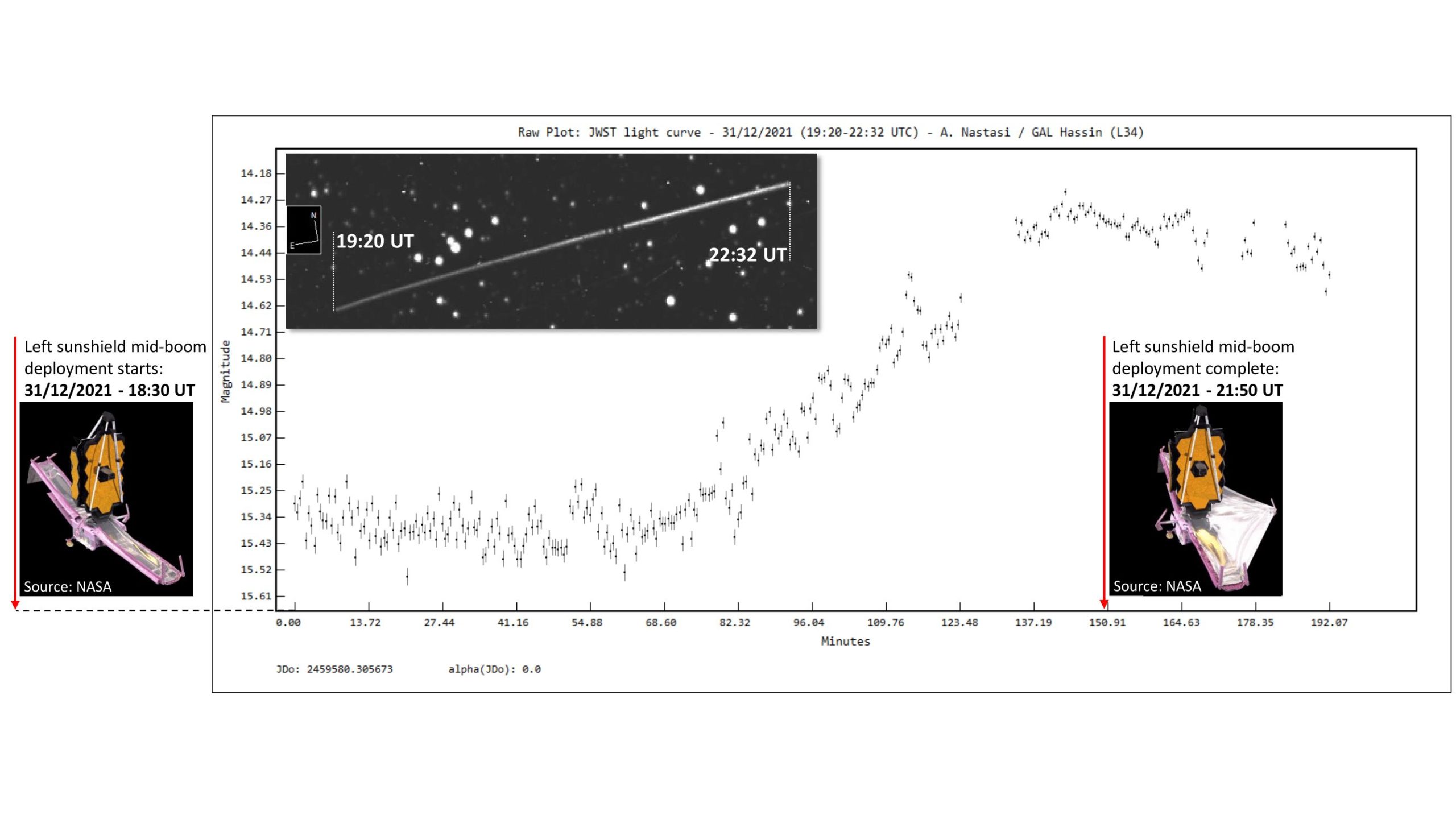The sunshield of the James Webb Space Telescope’s (JWST), the largest and most powerful space telescope, has been fully deployed and tensioned over a period of seven days. The telescope is the result of a collaboration between three space agencies: the American Space Agency NASA, the European Space Agency (ESA) and the Canadian Space Agency (CSA). Launched from the European space base of Kourou in French Guiana on 25 December 2021 on the Ariane 5 rocket and folded like a kind of origami, on 31 December the JWST began the complex phase of deploying its wide and delicate sunshield. At that time, the telescope was about 650 000 kilometers from Earth and travelling at 2500 km/h.
Its final destination is the Lagrangian point L2, located 1.5 million kilometers from Earth in the opposite direction to the Sun, which will be reached in about one week. Once around L2, the JWST will be parked over an orbit guaranteeing a stable pointing and high observing efficiency. In addition, its sunshield will be constantly blocking any light and heat coming from the Sun, Earth and Moon, allowing the Webb to work at the temperature of -233°C. Maintaining such a low temperature will be crucial for observing the infrared universe and hence answering to some of the fundamental questions related to the characteristics of the early universe, the formation of the first stars and galaxies and the detailed study of some of the exoplanetary systems and their atmospheres, looking also for possible life traces on these new worlds.
The GAL Hassin Astronomical Center was pointing its 40cm-aperture Galhassin Robotic Telescope 1 (GRT1) to the JWST right during the first opening phase of its sunshield on the evening of December 31st, between 20.20 and 23.30 Italian time (UTC+1). The observations were carried out by Alessandro Nastasi, the informatic astronomer of the center, who observed a change in brightness of the Webb by a factor of 2.5. “After an hour of observation, around 21.30, I observed a steady increase in brightness, which stopped around 22.50″ Alessandro Nastasi says. “This instant was perfectly consistent with the official time provided by NASA as the end of the deployment procedure of the left side of the sunshield. The extension of the reflective area of the Webb resulted in a brightness jump of 1 mag, i.e., JWST became 2.5 times brighter than it was almost two hours earlier”.

The James Webb sometimes shows rapid and intense variations in brightness depending on the angle at which the sun’s rays strike its reflective elements. However, these variations do not last more than about 15 minutes. The increase in brightness recorded by GRT1 was linear for about an hour and a half, just as you would expect from an object that steadily and continuously expands over time.
To date, GAL Hassin is the only observatory in the world to have measured and reported accurate photometry of the JWST during one of the most important phases of its unfolding procedure. “Observing the James Webb travelling through space with our ground-based telescopes is in itself a great emotion, but having even witnessed live one of the most critical and fundamental moments of the activation of such a great space observatory is something extraordinary”, Nastasi concludes.
Currently, the Webb has completed all deployment operations and has started aligning the 18 hexagonal pieces that make up its 6.5 m primary mirror. After an extensive calibration and testing phase of its on board science instruments, the first images should then arrive by summer.
All this occurring 1.5 million kilometers away from Earth, to look far into space and back in time to 13.5 billion years ago, to our early universe.